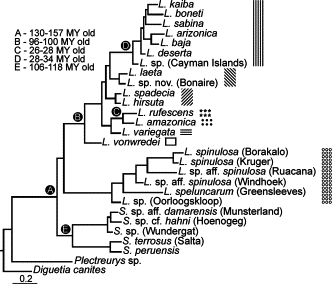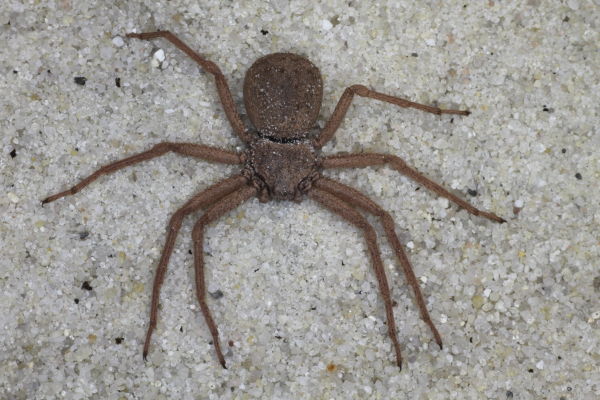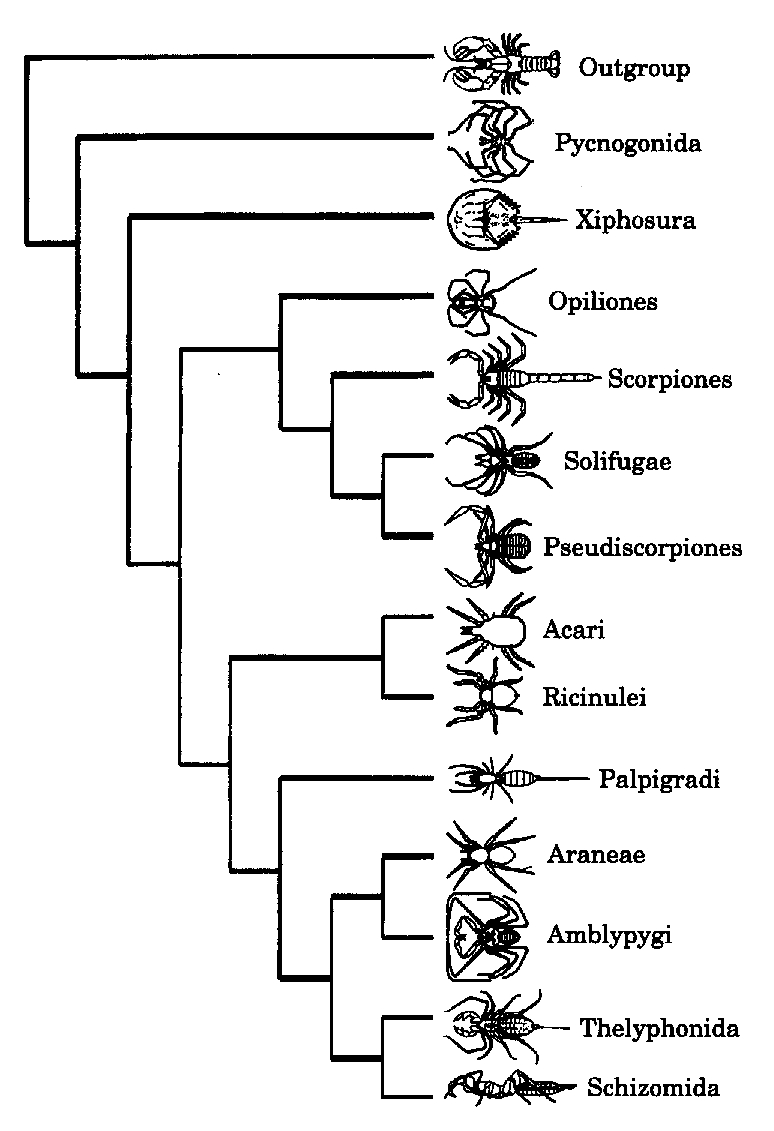Classification
Domain: Eukarya
Eukarya is the domain that arose 1.7 billion years ago from
prokaryotic organisms. It includes all organisms that
contain membrane-bound organelles, such as mitochondria. This is
unlike the other two domains, Bacteria and Archaea, where cells
do not have membrane bound organelles. Eukarya includes fungi
and protists, such as
Plasmodium falciparum and the
Shiitake Mushroom.
Kingdom: Animalia
Members of the kingdom Animalia represent a wide array of organisms
that exhibit qualities such as: being eukaryotic, heterotrophic, multicellular, motile at some stage in their life, and lack cell walls. These organisms can range from being as small as a tick to as
big as a blue whale(to learn about other types of whales, you may
want to consider visiting these pages about the
Beluga whale or the
Orca whale.) Sicarius hahni falls under this kingdom and
demonstrates all of these characteristics,
evident by how it eats insects, is multicellular, motile, and lacks
cell walls.
Phylum: Arthropoda
All spiders fall in the phylum Arthropoda, which is by far the most
successful of any phyla falling under the kingdom Animalia. This is
because the class Hexapoda (insects) is represented in this phylum,
which accounts for over half of the species diversity on the planet!
Spiders are in this phylum because of their chitinous exoskeleton,
segmented bodies, and paired-jointed appendages. Some other great examples
of arthropods are the
Summer Fishfly,
alderfly, and
crane fly.
Class: Arachnida
This class represents organisms such as mites, ticks, scorpions, and
spiders. Arachnids were some of the first arthropods to move into a
terrestrial environment. This class also lacks antennae,
mandibles, and the body is split into two distinct regions: the cephalothorax and abdomen. They also have a pair of pedipalps, which
are another pair of appendages not used for walking.
Order: Araneae
This classification includes only the spiders. Spiders may be one of
the most recognizable orders of invertebrates because of their
ability to produce silk from their abdominal glands. They range in
size from about 0.5 mm to 20 centimeters in length, have four pairs
of legs, four or less pairs of eyes, two distinct body regions,
fangs, and a pair of palps used for mating. Some other organisms
falling under this classification are the
Sydney Funnel-Web Spider and the
zebra spider.
Family: Sicariidae
This family of spiders is divided into two genera: Loxosceles and Sicarius. There are about 123 species
in this family, which was first proposed in 1991 by Platnick, based
on synapomorphies in spinneret morphology and a similar venom
toxin.
Genus: Sicarius
Sicarius refers to the genus of spiders commonly called the
six-eyed sand spider. The English translation of the word is
“assassin” or “hit man.” This is no surprise, given the way the
spider buries itself under the sand and secretly attacks its prey.
Species: Sicarius hahni
As was just mentioned, the genus name Sicarius is Latin for
“assassin” or “murderer.” The species name Sicarius hahni, is named
after the founder of this spider, arachnologist Carl William Hahn.
The common name, six-eyed sand spider, got its name because of the
spider’s distinct ability to camouflage itself with sand, along with
having three pairs of eyes. The common name can refer to the
specific Sicarius hahni species, but can also refer to any of the
species under the genus Sicarius.
This is a phylogenetic tree outlining the evolutionary relationship between members of the class Arachnida and other classes under the phylum Arthropoda. Every group seen on the tree is part of the class Arachnida except for the top three. Sicarius falls under the Araneae classification, the fourth from the bottom. This tree was created by Wheeler and Hayashi in 1998 based on 93 morphological characters, 1000 bases of 18S rDNA, and 350 bases of 28S rDNA.

This phylogenetic tree represents the divergences of species under the family Sicariidae. As mentioned before, the two genus in this family are Sicarius and Loxosceles. This tree was constructed using 28S rDNA, and the nodes labeled A through E show the timetable of when some of the divergences of genus and species happened. The divergence of the Sicarius species happened 130-157 million years ago and based on some of the other nodes labeled, Sicarius hahni must have first appeared from 27-98 million years ago.
To move on to the habitat, click here. Or you can go back home.

